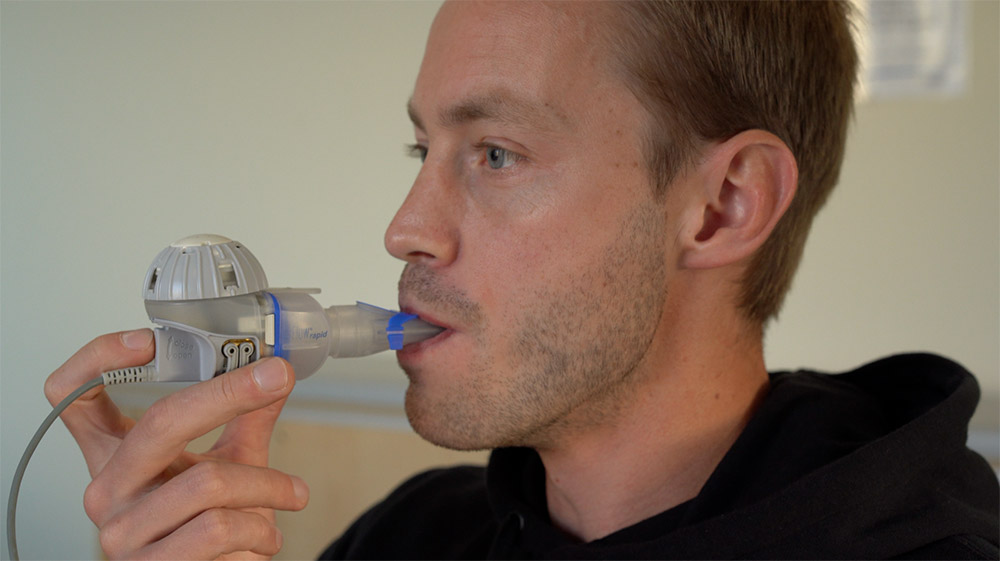Inhalation Therapy Technique
Positioning
The most common position to be in during inhalation therapy is a supported upright position.
Alternative positioning such as side-lying may be used to target specific areas of the lung and your physiotherapist may recommend this.
Breathing
Different breathing patterns may be required for different types of inhalation therapy. For example:
- Nebulised medications: Slow steady breaths with occasional deep breaths are generally recommended.
- Dry powder inhalers: Requires a deep inspiration and a breath in that is fast enough to deliver the dry powder into the lungs (high inspiratory flow velocity)
- Metered dose inhalers with spacer: Either performed with normal relaxed breathing or a slow deep inspiration with a breath hold.
Combining airway clearance and inhalation therapy
Some inhalation therapy and airway clearance devices are designed to be combined to improve the efficiency of treatment and help individuals take their medications more often by offering some time saving.
At this stage, it is only recommended that nebulised inhaled hypertonic saline can effectively be combined with airway clearance as there are no published trials combining airway clearance with other inhaled medications.
It is recommended individuals should discuss with their physiotherapist any combinations of airway clearance and inhalation therapy prior to commencing.
If you are using inhaled antibiotics and have other people in your home please talk to your CF physiotherapist if it is recommended you use a filter on your nebuliser. You should always aim to have your inhalation therapy in an open well ventilated room and if anyone in your household has problems with their lungs they should not be in the room at the same time.

Correct mouthpiece placement

Incorrect mouthpiece placement









